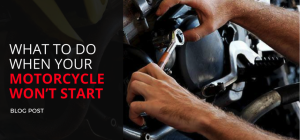 When it comes to your car’s chassis, it’s a lot more productive to think of it as a system, rather than a single object. That’s because it is made up of a wide variety of parts with specific roles and fitment, so altering any one of them from the OEM specifications can affect the car’s handling and performance. From the bushings to the tires, even a change of material without altering dimensions or adjustment settings can have a major impact on the vehicle’s behavior and the strain placed on different parts of the system. When you figure in adjustments like offset, the effect on performance can be profound. It can also be hard to predict, especially if you are making several changes at once.
When it comes to your car’s chassis, it’s a lot more productive to think of it as a system, rather than a single object. That’s because it is made up of a wide variety of parts with specific roles and fitment, so altering any one of them from the OEM specifications can affect the car’s handling and performance. From the bushings to the tires, even a change of material without altering dimensions or adjustment settings can have a major impact on the vehicle’s behavior and the strain placed on different parts of the system. When you figure in adjustments like offset, the effect on performance can be profound. It can also be hard to predict, especially if you are making several changes at once.
What Does Adjusting Offset Do?
Wheel offset is the measurement of the displacement between the center of the tire and the contact patch, the part that does the work of ground contact. Most OEM tire packages have a negative adjustment, meaning the contact pact is pulled in a little bit toward the center of the car. Moving the offset adjustment affects the scrub distance, which in turn affects the turning radius and the amount of change that happens when steering. Its effect is profoundly different for front wheel and rear wheel drive vehicles because of this. Increasing the scrub radius on a front wheel drive car means creating a proportional increase in the force felt while turning, because it affects the car’s balance in the curve, putting more force on one side and creating a greater contact surface there.
When To Make Offset Adjustments
If your vehicle’s toe-out forces are a little hard to handle, changing the offset can help you have a smoother handling experience. It can also be used as one of the adjustments you make when trying to correct over- or under-steer effects. For drivers who are into performance tuning or investing in off-road builds, these calibrations are a good idea, because a lot of your experience with a vehicle will depend on whether it is responsive in the right ways for your driving style. It’s also a good idea to test the vehicle and make offset adjustments whenever you install wheel and tire packages that require custom fitment, like wheels that are larger or smaller than the OEM recommendation. That way, you know those new Jeep wheels will deliver the performance you expect when you take them out for real.
Learn More About Performance Parts for Trucks
If you are trying to find out more about how to really customize your ride, don’t just search for truck accessories stores near me and then check out the selection, take your research a step further so you can pick the brains of the drivers who have already done what you want to do.
- Join forum communities
- Check out instructional videos
- Look for local auto clubs and off-road riding groups
If you put together the right group of peers and resources, you’ll learn about new performance parts before they even hit the store, and that will help you plan your upgrade path to keep pace with your driving skills.
What is the temperature relationship with the tires? How does the speed at which you drive on your car tires affect? And if the state of the terrain is not optimal, how does it impact the tires of the car? As you can see, Tesla cars have increased their consumption greatly with larger diameter tires. The most important difference is recorded in the Model X variants, whose consumption increases between 22.2% and 23.3% with a two-inch larger tire.
However, the test results could fall short, as they were performed on test machines at a stable speed of 80 km / h, without taking into account wind and rolling resistance. In a real scenario, larger diameter tires could consume much more energy.
However, the real key is in the width of the tires (and the tires). The surface of the wheel in contact with the pavement largely determines the amount of friction that is generated, which translates into consumption. The greater the rolling resistance, the lower the autonomy of the car.







